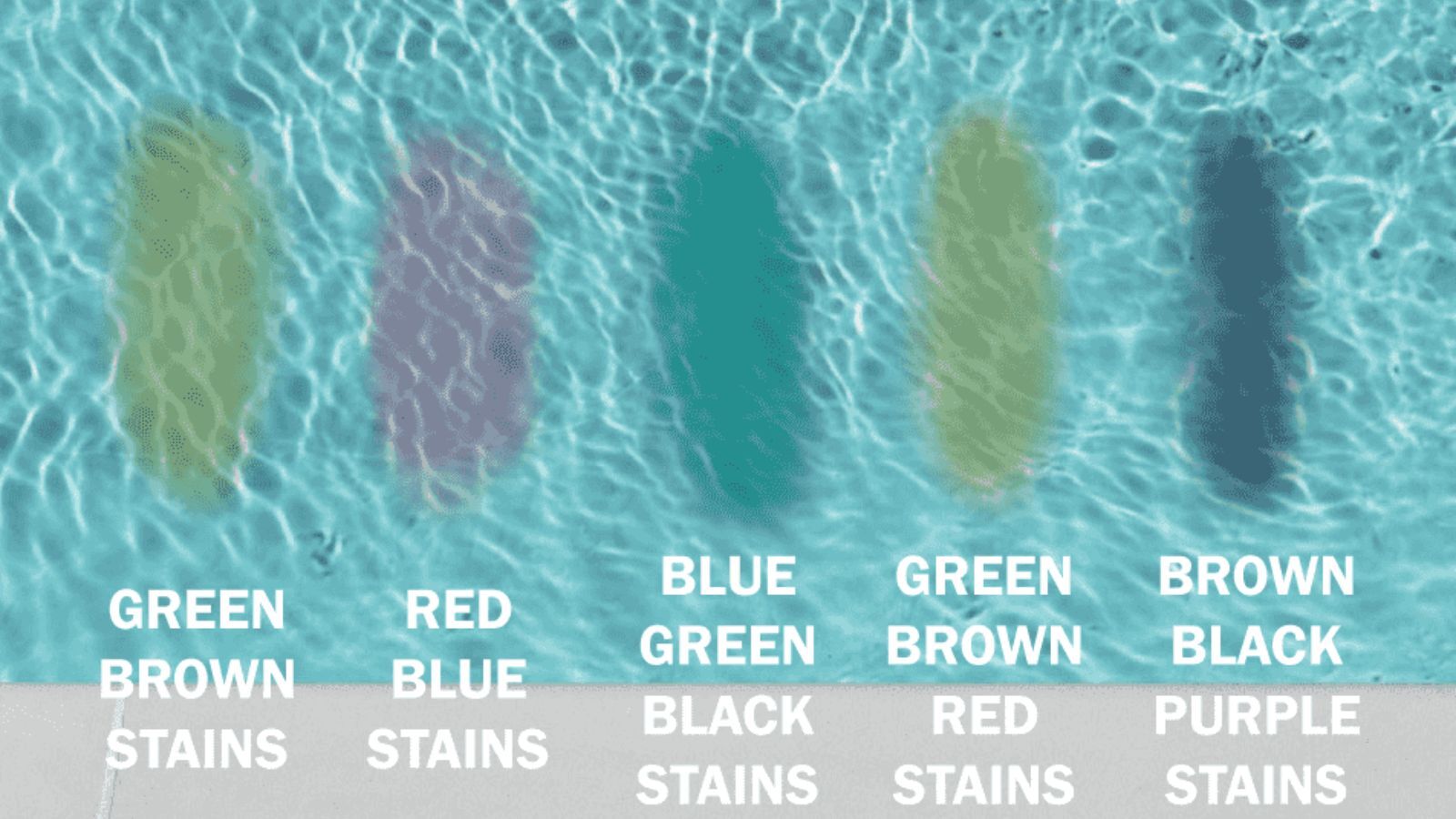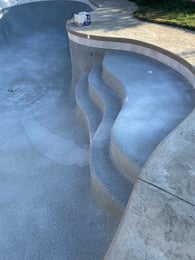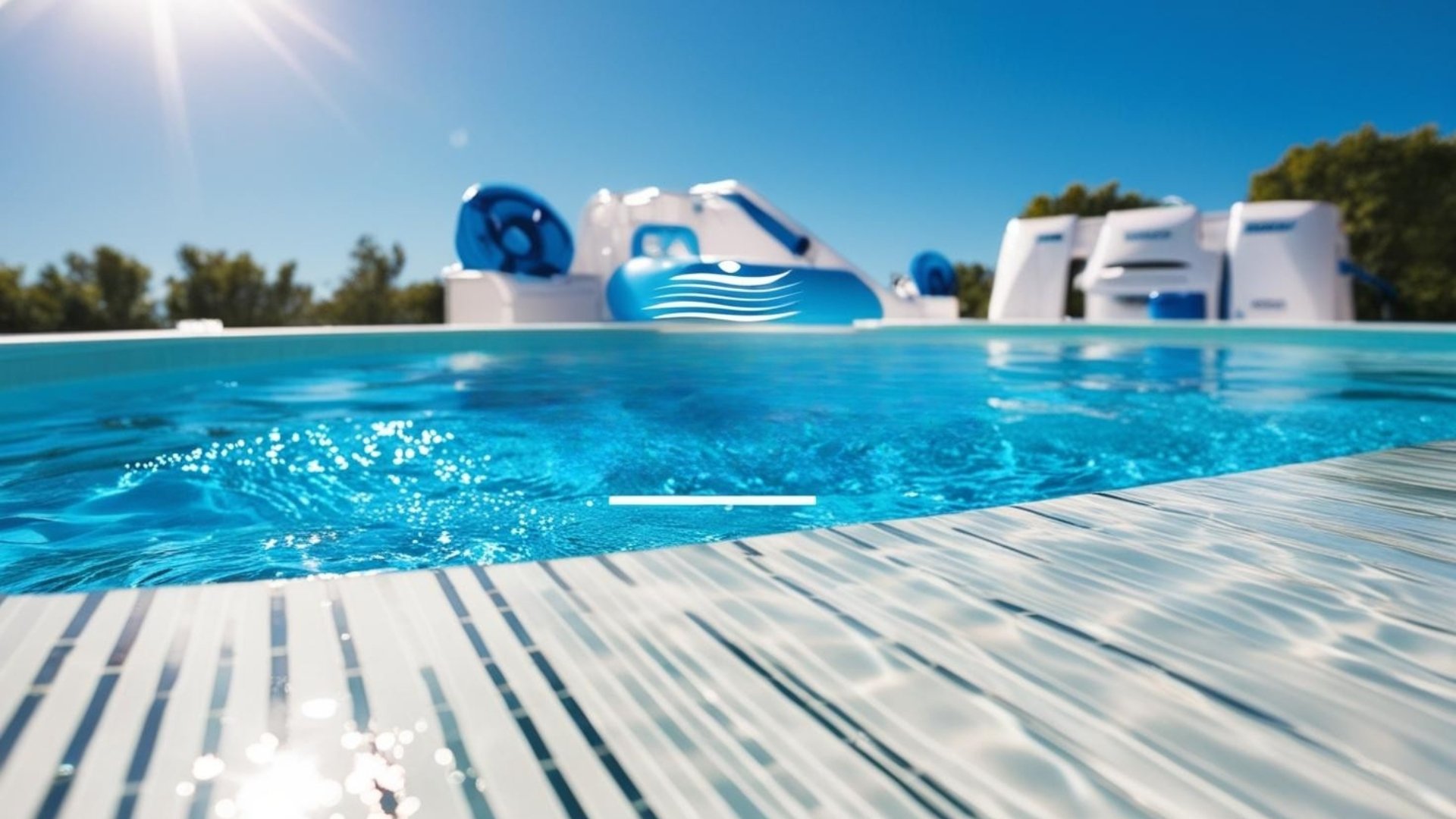What the VGB Pool Safety Act Means for Your California Pool
If you own a pool or spa, you might assume it’s safe — but how can you know? Maybe your pool was installed years ago, or maybe you’ve never had the...
4 min read
JC Escudero : Jul 17, 2025

Pool plaster stains aren’t just cosmetic. They can signal deeper problems that shorten the lifespan of your pool’s surface.
Whether you're seeing green patches, rust-colored spots, or crusty white scale, identifying the source is the first step toward a cleaner, longer-lasting pool.
We’ll break down the most common types of plaster stains — what causes them, how to remove them safely, and how to prevent them from coming back.

Before you begin treatment, take a moment to examine the color of your pool stain closely. This quick guide can help you identify the cause of the discoloration.
|
Stain Color |
Likely Cause |
|
Greenish-Brown |
Organic debris (leaves, algae, dirt) |
|
Reddish-Blue |
Berries or fruit-bearing plants nearby |
|
Blue-Green-Black |
Copper (from well water or plumbing corrosion) |
|
Green-Brown-Red |
Iron (well water, rusted outdoor metal) |
|
Brown-Black-Purple |
Manganese (found in well or municipal water) |
Pro Tip: Try the vitamin C test. If a tablet lightens the stain, you’re likely dealing with an organic or metal-based stain.
Stains come from more than just dirt, and each requires a different solution. They may be caused by:
Knowing what you’re dealing with is crucial to selecting the right solution. Its best to consult a professional before you start just dumping products that may not even be the correct fix for the type of stain you may have
These are the most common pool stains, particularly in areas with a lot of leaves or strong winds.
What They Look Like:
Green, brown, or yellow blotches on plaster.
What Causes Them:
Prevention Tips:
How to Remove Organic Stains:
Pro Tip: For tough stains, consider hiring a professional for a mild acid wash or simply power washing, as this is often recommended since the stains are mostly surface-level and do not typically penetrate the cement finishes.
Organic stains can be prevented with consistent cleaning and the use of appropriate chemistry.
These are often the trickiest — and easiest to misidentify.
What They Look Like:
Rusty, bluish-green, or brown/black stains.
What Causes Them:
Prevention Tips:
How to Remove Metal Stains:
Even with good chemistry, calcium buildup can create a rough, dull look.
What They Look Like:
White chalky scale, crusty patches, or calcium nodules.
What Causes Them:
How to Remove Calcium Deposits:
Don’t just scrub — solve the cause of the calcium first.
Improper hydration or pool filling procedures can cause permanent discoloration.
What They Look Like:.jpg?width=283&height=212&name=Replaster%20Horizontal%20Blog%20Visual%20(2).jpg)
Gray, blotchy patches or uneven color on plaster.
What Causes Them:
Prevention Tips:

How to Remove Cement-Based Stains:
Pro Tip: Darker plaster colors show more visual blotching due to dye variability. The primary ingredient in pool plaster is white cement, which can lead to poor mixing and uneven color distribution. These issues are the main causes of discoloration.
Most surface discoloration happens during the first 48 hours post-fill.
This is your pool’s version of a bathtub ring — and it builds fast.
What They Look Like:
Sticky smudges or discoloration where water meets tile.
What Causes Them:
Prevention Tips:
How to Remove Waterline Stains:
The waterline is where most first-time pool stains show up.
Your pool environment may be staining your plaster without you knowing.
What They Look Like:
Dark streaks or stains near pool edges or steps.
What Causes Them:
Prevention Tips:
How to Remove These Stains:
If you have stone near your pool, seal it — always.
Even with the best equipment, unbalanced water can still stain everything.
What They Look Like:
White scale, unusual discoloration, or rough surfaces.
What Causes Them:
Prevention Tips:
How to Remove These Stains:
Balanced water = long-lasting plaster.

Pool stains are more than cosmetic.
They’re signs. Signs of water chemistry, environment, or installation issues, and signs that it’s time to take action.
Now that you understand how to identify stains by color, diagnose their root causes, and apply the right removal or prevention methods, you're better equipped to protect your investment and enjoy a beautiful, lasting pool finish.
Next Top Article: Algae Free Pool
At J Designs, since 2008, we have helped pool owners like you eliminate the guesswork from maintenance with stain-free, stress-free results.

If you own a pool or spa, you might assume it’s safe — but how can you know? Maybe your pool was installed years ago, or maybe you’ve never had the...

Not sure what kind of pool heater is right for you? Wondering if you really need one, or if it’s just a luxury that burns more gas than it’s worth?